#museum of the ancient agora
Photo
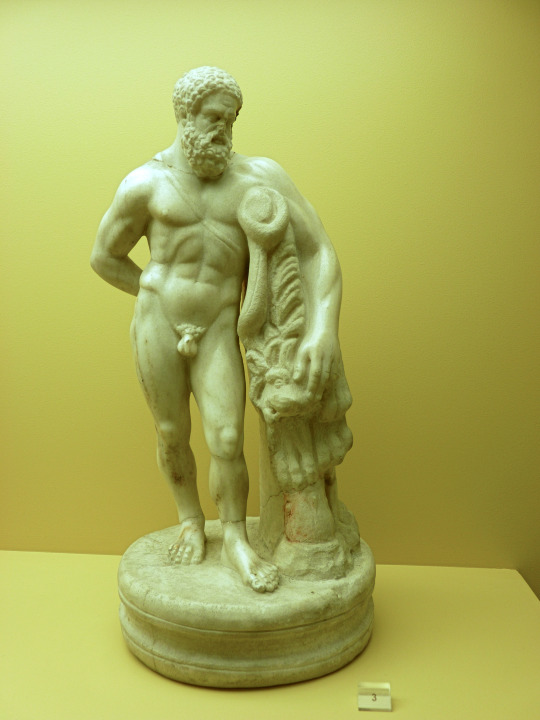
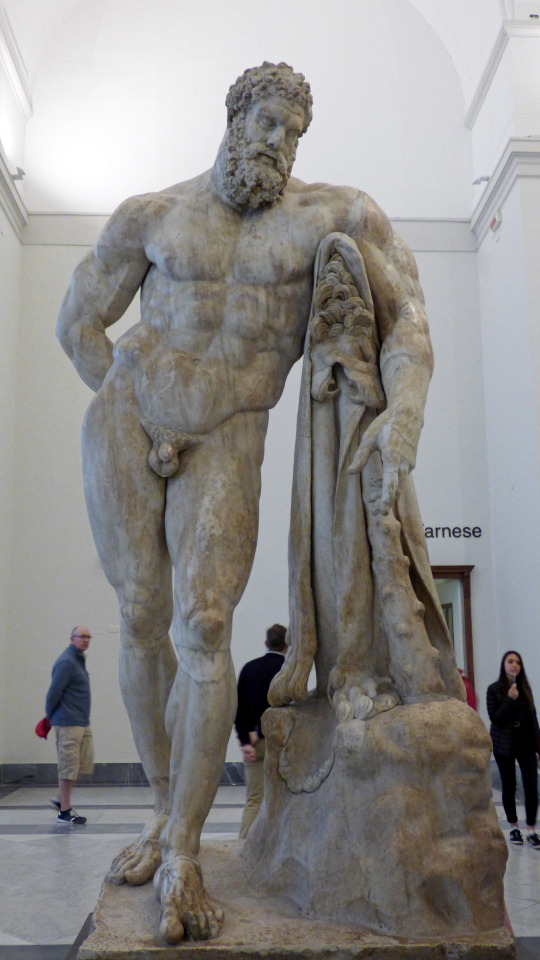
Today’s Flickr photo with the most hits is this little 8″ figure of a weary Heracles. It is in the Agora Museum, Athens.
This motif provided inspiration for generations of sculptors. Looking very similar to the Athens figure is this monumental sculpture from the Farnese collection, housed in the Archaeological Museum, Naples.
This titanic figure was commissioned for the Baths of Caracalla, in Rome. It cites a well-known Greek original - cast in bronze by Lysippos (4th BCE) which was still extant in 1205. It was melted down by Crusaders, in the sack of Constantinople.
The artist who sculpted the Athens figure would also have known of Lysippos’ bronze original. His domestic statue allowed a purchaser to have a little piece of mythology at home, one that had a fine pedigree.
#heracles#hercules#statue#lysippos#weary heracles#farnese collection#naples#ancient agora#athens#museum
2 notes
·
View notes
Photo
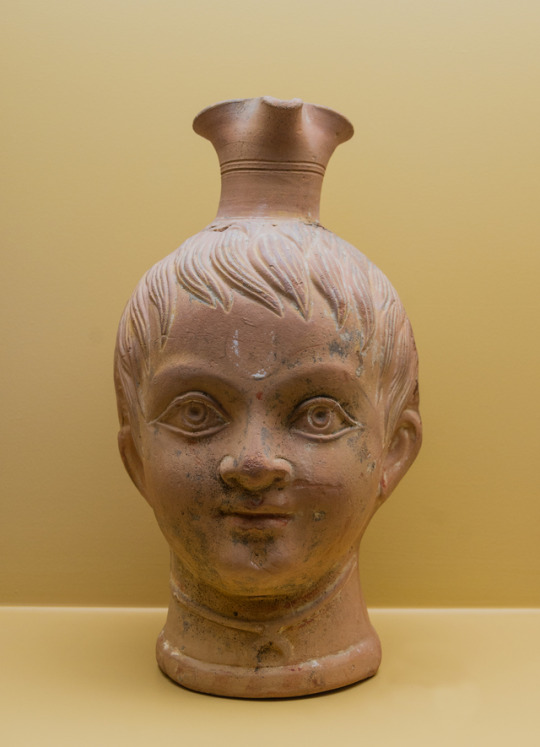
Trefoil-mouthed vase in the shape of a boy’s head. Artist unknown; 3rd cent. CE. Found in the Agora, Athens; now in the Museum of the Ancient Agora (Stoa of Attalos), Athens.
#classics#tagamemnon#Ancient Greece#art#art history#ancient art#Greek art#Roman art#vase#ceramics#Roman Greece#Roman Empire#Athens#Athenian Agora#Museum of the Ancient Agora#Stoa of Attalos
233 notes
·
View notes
Photo
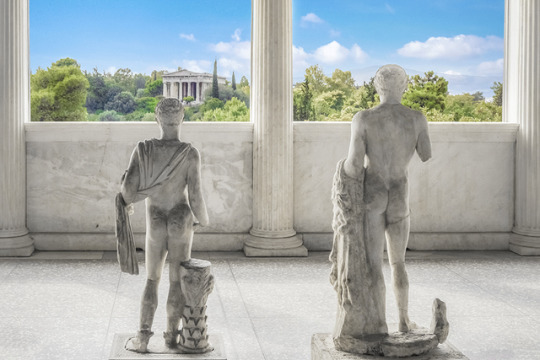
The Stoa of Attalos, Agora of Athens, Greece.
These two male statues were excavated in the archaeological site of the Ancient Agora and placed on display along the upper floor of the Stoa of Attalos. The stoa was built around 150 BC, by Attalos II, King of Pergamos as a donation to Athens.
Sculpture | Athens
#art#sculpture#antiquities#ancient art#ancient greece#ancient sculpture#statue#male statue#columns#architecture#ancient history#ancient architecture#stoa#stoa of attalos#athens#greece#ancient agora#museum#art aesthetic#arts#marble#hellenistic#attalos#doric order#temple of hephaestus
152 notes
·
View notes
Text
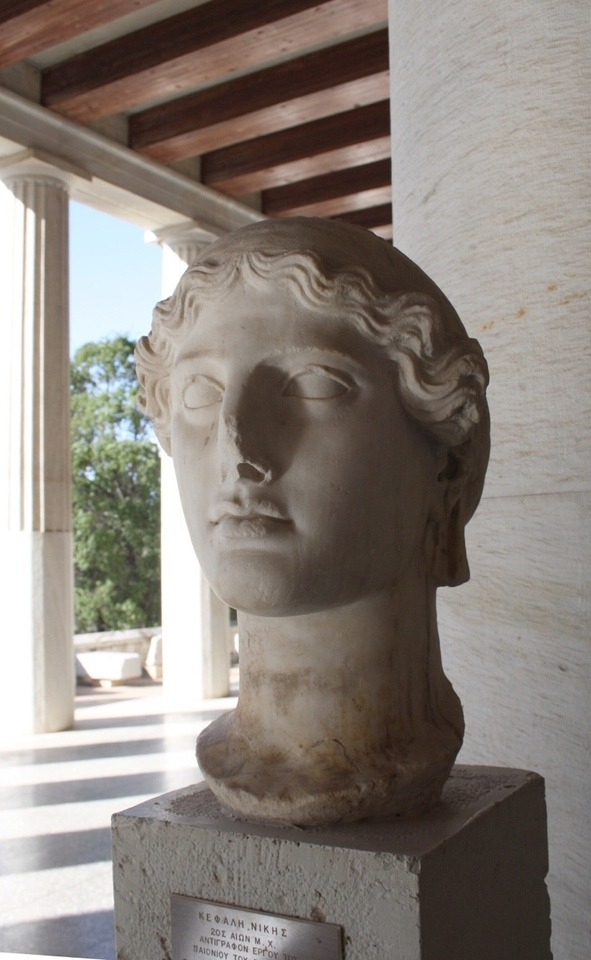
Head of the Nike of Paionios, 2nd century Roman copy of the Greek original, at the Agora Museum in Athens.
#roman copy of greek statue#ancient rome#roman art#ancient greece#ancient greek art#nike#nike of paionios#2nd century#roman statue#agora museum#athens
143 notes
·
View notes
Text

~ Floor Mosaic of Personification of Agora (Abundance of the Marketplace).
Place of origin: Antioch
Culture: Roman
Date: A.D. late 4th century
Medium: Cubes of marble, limestone and glass embedded in lime mortar.
#ancient#ancient art#ancient mosaic#art#mosaic#floor mosaic#agora#abundance of the marketplace#antioch#roman#a.d. 4th century#history#archeology#museum
173 notes
·
View notes
Photo
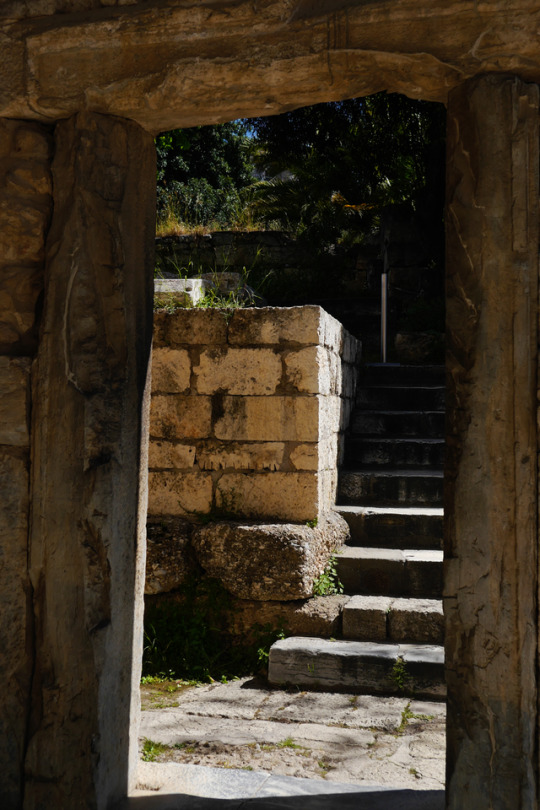
Ancient Agora of Athens: Agora Archaeological Museum Doorway
9 notes
·
View notes
Text

A terracotta bull head shaped oil lamp, 2nd c. BCE. Athens, Greece. Museum of the Ancient Agora
137 notes
·
View notes
Photo
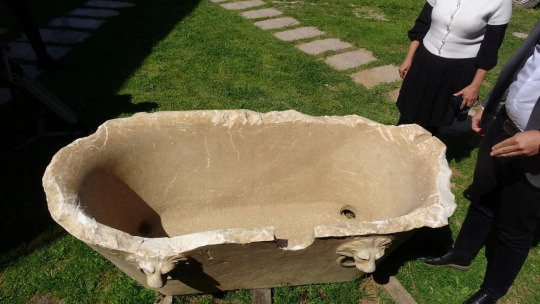
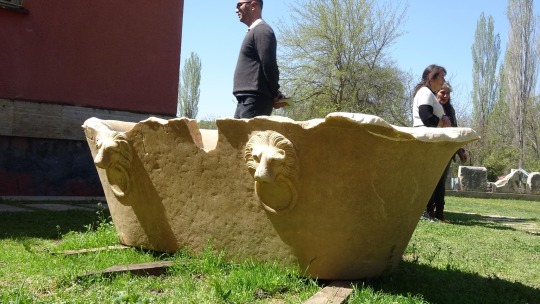
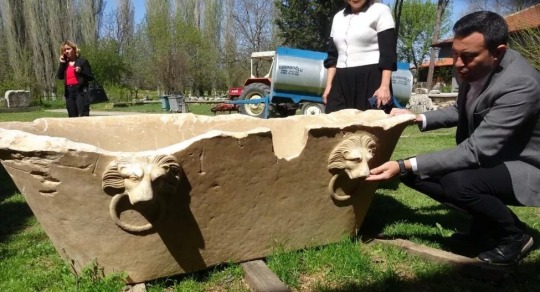

A Very Rare 3rd-Century Roman Marble Bathtub Discovered in Turkey
Made entirely from marble, the tub is the only one of its kind found in Turkey
Weighing in at one ton and measuring 1.80 meters in length (almost six feet), one can’t help but wonder how antiquities thieves managed the enormous feat of stealing a 1,800-year-old-marble bathtub, but in any event, the smuggler’s luck ran out when they were caught by Turkish law enforcement agents trying to sell the piece in Turkey’s western province of Aydin.
As reported in Hurriyet Daily News, the tub is unique in that it is entirely made from marble and with lion’s head reliefs on two sides. It is believed that the tub had been manufactured in the ancient Hellenistic city of Aphrodisias, which was dedicated and named after the Greek goddess of love, Aphrodite.
According to the newspaper Provincial Culture and Tourism Director Umut Tuncer examined the bathtub and emphasized that the ancient city of Aphrodisias, which is on the UNESCO World Heritage List, was unique and well known for its sculpting school.
“People of Aphrodisias were wealthy. We think that the marble bathtub is a special piece found in this city, which dates back to 1st BC. This bathtub, which is about 1,800 years old, is one of the rare examples in the world because it is completely marble. As far as we know, it is the only example in Turkey,” Tuncer said. “There are bathtubs created with various mud layers that have been found in Turkey before, but this completely marble structure actually expresses the wealth of this region and the welfare of the society.”
He said the lion head reliefs on the right and left sides of the tub to represent power and authority, and believes the tub had been used in the house of a state administrator or a wealthy businessperson who ruled the region at that time.
Noting that the culture of bathing, hot water and cleaning was an important part of the culture during that period, Tuncer told the paper the tub would be restored and exhibited at the Aphrodisias Museum.
“There is a bath structure in all of our ancient cities. These places were actually used as public and social spaces,” he said.
According to UNESCO, the city’s wealth came from the marble quarries which surround it and the art produced by its sculptors.
Located in western Anatolia near the modern-day village of Geyre, the ruins though lesser-known have been well preserved and restored, including temples, a theater, agora and two traditional-style bath complexes which had a prominent place in the city’s layout.
By Judith Sudilovsky.
#A Very Rare 3rd-Century Roman Marble Bathtub Discovered in Turkey#archeology#archeolgst#looted#stolen#ancient artifacts#history#history news#ancient hiatory#ancient culture#ancient civilizations#roman era#roman history#roman empire
37 notes
·
View notes
Photo

Today’s Flickr photo with the most hits: this delicate oil lamp from the Agora Museum, in Athens. It depicts the story of Leda and the Swan (the swan was Zeus in disguise).
The Olympian deity never appeared to miss an opportunity to have sex with attractive women. And not just women.
Sneaking up in unlikely disguises was one of his operating principles. If you don’t believe Leda, just ask Ganymede or Europa.
The child resulting from this rape is known to history as Helen of Troy.
#oil lamp#leda#swan#zeus#rape#myth#olympian gods#greek#archaeology#pottery#ancient agora#stoa#museum
3 notes
·
View notes
Note
hi there:)
me and my s/o are visiting athens for 4 full days in mid-/end- february. we are big fans of architecture (i am especially a huge byzantine and moorish architecture nerd), really big on sightseeing, books, greek food (personally, it is my favourite cuisine), technical/science stuff, and weird/abstract art.
we're two 20 year old students on a budget and wanted to ask for your tips on planning our itinerary. :)
Heyy :) okay then this is going to be challenging because I am no expert at Athens enough to schedule your four days but I can give you ideas for places not to miss based on your preferences.
For Byzantine (and Moorish, not really but hey) architecture:
The Byzantine & Christian Museum
Daphni Monastery (UNESCO)
Kapnikarea church
Benakis Museum of Islamic Art
Bonus: Almost all Greek churches, even modern ones, are designed after the Byzantine style.
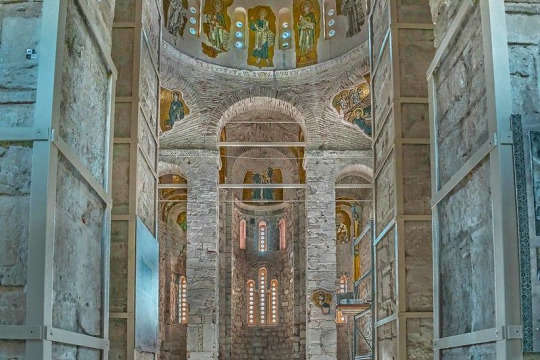
Detail from the interior of Daphni Monastery.
Books (+architecture):
The (old) National Library of Athens
The (new) National Library of Athens, also known as the Stavros Niarchos Foundation
For bookshops and book cafes you can find info in tripadvisor or google reviews etc

The old National Library.
Technical / science stuff:
Kotsanas Museum of Ancient Greek Technology
Eugenides Planetarium (the planetarium is great, the problem is that it is focused on Greek speakers and it needs 1 extra euro for headphones for English speakers, and also most films are for kids so I recommed calling them up to be sure it's worth it for you, but the planetarium as an establishment is world class)

Eugenides Planetarium.
Weird / Abstract Art:
Museum of Cycladic Art (Cycladic civilization, second oldest civilization recorded in Greece, 3200 - 1050 BC)
National Museum of Contemporary Art
Goulandris Museum of Modern Art
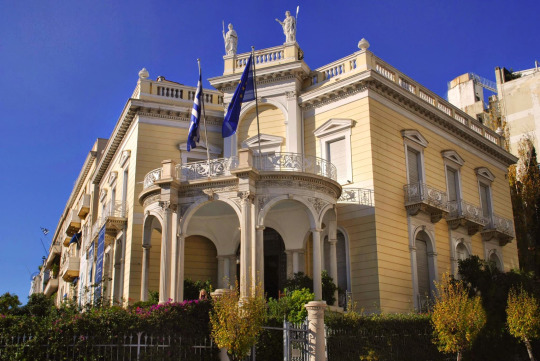
The mansion housing the Museum of Cycladic Art.
Cuisine
As I have little experience from eating in Athens, I believe this guide is better than anything I could write on my own. You can cross-examine the recommendations with the prices in TripAdvisor.
Sightseeing:
Acropolis and the Parthenon
Temple of Hephaestus
Plaka & Anafiotika neighborhoods
Ancient Agora
Temple of Olympian Zeus
The Panathenaic Stadium (obviously it's not just a stadium, it's built in 335 BC and it's the only marble stadium in the world)
Monastiraki & Flea Market (perhaps you could get cheap books there!)
Zappeion
Athens Academy
Odeon of Herodes Atticus
Temple of Poseidon in Cape Sounion

Monastiraki square with the Acropolis in the background.
Attempt at overall schedule tips:
Start with the sightseeing. Most of these sights are in close distance and there are sightseeing pass tickets available that for a certain price give you access to a lot of places. But better search if and which suits you best on your own.
Anyway, after you are done with the sights, mix the recs of the other categories based on proximity and opening hours .
Leave the Daphni monastery and especially the Temple of Poseidon for the end as they are out of the city, and they will also be a nice way to end your trip on a high note. The Temple of Poseidon is about one hour from Athens, the Daphni monastery much less.
Hope this helped! Enjoy your time in Athens!
#greece#travel#tourist guide#travel guide#sightseeing#athens#attica#central greece#sterea hellas#mainland#anon#ask#greek cuisine
70 notes
·
View notes
Photo
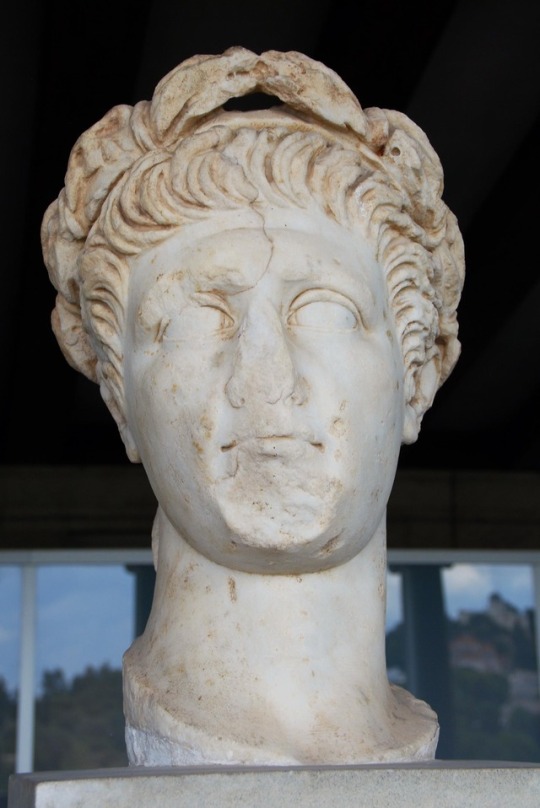
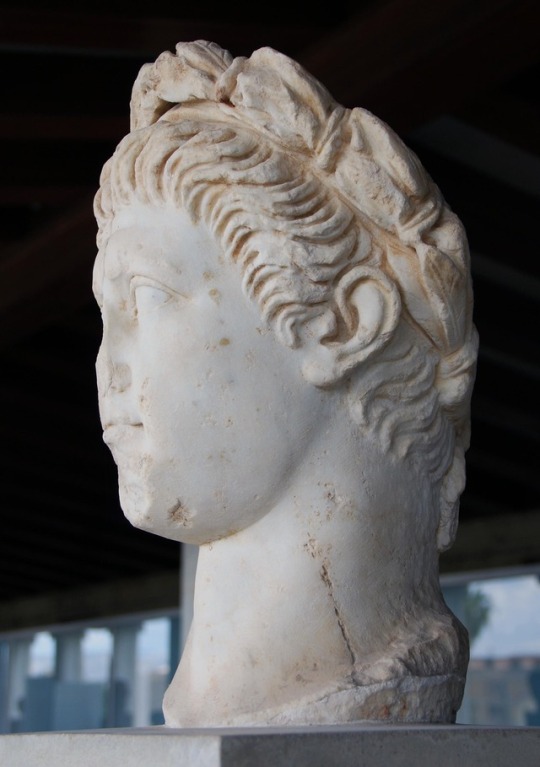
Portrait of Trajan (?) or a priest wearing a laurel wreath. 98-117 AD. Pentelic marble. Museum of the Ancient Agora, Athens. S 347 (X)
#ancient rome#Trajan#Trajanic#Flavian#priest#II century AD#I century BC#man#portrait#marble#pentelic marble#unfinished#Museum of the Ancient Agora#Athens
17 notes
·
View notes
Text

Ancient clothing
* Agora Museum, Athens
Athens, October 2008
90 notes
·
View notes
Photo

Fragmentary vase in the form of Dionysos’ head
Agora of Athens ~ 410 BC Museum of the Ancient Agora ~ Athens
Greece
#dionysos#ancient culture#Ancient Greek Art#photooftheday#picture of the day#ancient world#terracotta
14 notes
·
View notes
Text

https://www.kusadasitaxis.com
The Ephesus ancient city in Turkey
The ancient city of Ephesus is one of the greatest archaeological sites in Turkey. At the time it was the center of culture and commerce of the Roman Empire. If you wonder about the city of Ephesus location, then it is located 3 km southwest of Selcuk town in Izmir province. So what to see in Ephesus ancient city and what the things to do in Ephesus Turkey? There are monuments like the Temple of Artemis of Ephesus (one of the 7 wonders of ancient world) and the Cave of Zeus in Ephesus. The holy place of pilgrimage for early Christians - the burial place of the Virgin Mary and the Apostle John are also located here.
Here are some interesting ancient Ephesus facts. According to the history of Ephesus ancient city was founded around XVI - XI centuries BC. It was originally Ionian colony. In the VII century BC city of Ephesus was destroyed including the Temple of Artemis of Ephesus by the Cimmerian tribes that was later restored by the king of Lydia – Croesus. Later the Persian king Cyrus conquered the city of Ephesus in the middle of the VI century BC.
Such violent twists and turns around the city of Ephesus eventually gave way to a peaceful and painless join into the Roman Empire. The value of the ancient city of Ephesus in Turkey today can be determined by references in the annals to frequent visits of such great Romans as Cassius, Antonius, Brutus and even Cicero. Dynasty of Augustus made the ancient city of Ephesus the capital of one of the Roman provinces - Asia. After that Ephesus began to grow and has become a bustling commercial center, the residence of the Roman rulers and became one of the five largest cities of the Roman Empire. After that ancient Ephesus was considered one of the most important cities of the Christian religion. The apostle John was conducting his sermons in Ephesus Turkey. He was buried there in the church that was named in his honor. In addition according to legends the Holy Virgin Mary has chosen Ephesus Turkey as her final resting place after the crucifixion of Christ where she lived with Apostle John who took care of her. One of the ancient Ephesus facts city is known is that it has been visited by the Apostle Paul. The third Bishop Ecumenical Council was conducted here in 431 AD.
The ancient city of Ephesus today is a kind of open-air museum, alluring, mysterious, incredibly beautiful even today. Some of the most popular tourist attractions of ancient Ephesus are Temple of Hadrian, Ephesus theater, Kuretes street, the Celsius Library in Ephesus and the Odeon .
One of the things to do in Ephesus ancient city is to visit the Temple of Hadrian the Emperor that is one of the most well-preserved buildings in Ephesus museum. The facade of the temple is decorated by beautiful curved arch supported by two powerful central columns. Once the entrance to the temple was adorned by four statues of great emperors - Maximian , Diocletian, Galerius and Constantius Chlorus . The surviving pedestals of these statues confirm this fact.
The ensemble of buildings is located opposite to the Temple of Hadrian and is titled simply "Houses on the Hill". The richest and most powerful inhabitants of Ephesus Turkey used to live in these beautiful houses.
Temple of Hadrian and the Houses on the Hill are located in a broad and beautiful Kuretes street that stretches from the ancient Ephesus library to Agora. There are the ruins of ancient houses, columns, statues, stone pedestals, capitals, friezes and the remains of shops on both sides of the street. The Kuretes Street is also notable because of the location of marble wall where all the laws of Ephesus are engraved.
On the slope of a hill not far from the Kuretes Street you can see a semi-circular (with roof in the past) building - the Odeon. Scientists are still arguing about the purposes for which the Odeon was built because the architectural design of the building is such that it can be both - the small theater for 1,400 seats and the place for the Senate of the city. But city of Ephesus already has the Great Theatre for 25,000 seats for artists and
gladiator fights.
Another thing to do in Ephesus Turkey is to visit the one of the most magnificent and beautiful buildings of Ephesus - the Library of Celsius and it is definitely another thing to see in Ephesus Turkey. Ephesus library is one of the richest libraries of the ancient world after the Library of Alexandria and Pergamon library so definitely it is one of most popular tourist attractions in thr city of Ephesus. It counted more than 12,000 hand-written scrolls.
#kusadasi transfers#kusadasi taxi#airport transfers#bodrum transfers#travel#trip#traveling#kusadasi#bodrum#dalaman#explore
11 notes
·
View notes
Photo
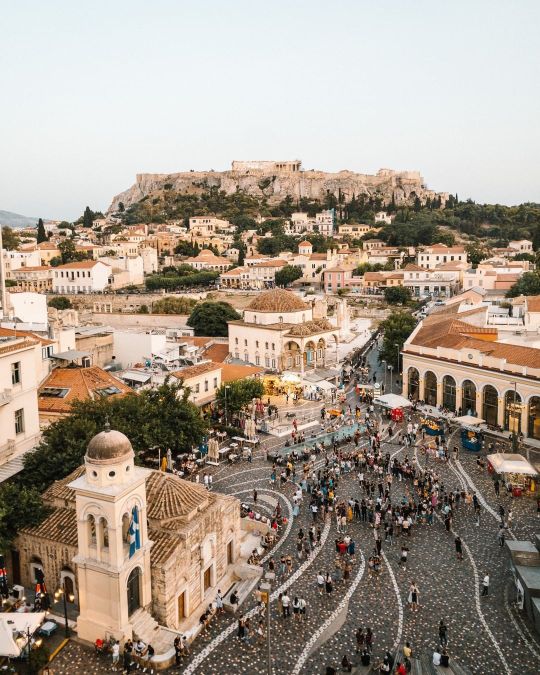
Over 5,000 years of history. 🇬🇷 🌇A stop in Athens on a trip to the Greek Islands or the greatest beaches in Greece is common, but this huge metropolis is also home to fascinating historical monuments, exciting excursions, upscale hotels, and mouthwatering restaurants. There is a good ferry system in place to get you to Santorini, Mykonos, Naxos, and Paros, as well as the other Aegean islands. 🛬Athens is the epicenter of Ancient Greek culture and the cradle of democratic government in Greece. Travelers go to Athens to see the ancient sites, which include the Acropolis (which contains the Parthenon), the Ancient and Roman Agoras, Hadrian's Library, the Temple of Olympian Zeus, and the Panathenaic Olympic Stadium, all of which are world-famous. 🪐One of the most enjoyable things to do in Athens is to simply explore the streets and squares and take in the colorful atmosphere. The city also has fantastic museums, restaurants, and cultural events.
https://vacantology.com/places-to-visit-in-athens-greece/
#athensgreece#athensvibe#athenscity#athenslife#athens_city#loves_athens#visitathens#heathensofinstagram#athensgram#athensview#athensflyingweek#athensmade#athenstravel#athens🇬🇷#instaathens#athensstreets#athensfoodie#athensnightout#athensstreet#athensbestpictures#athensphotographer#athensny#athensnightlife#athensiloveyou#eyeofathens#thisisathens#streets_in_athens#exploreathens#athens_by_night#athensdowntown
37 notes
·
View notes
Text
“The amphidromia was held about a week after the birth. This was the ritual cleansing of the mother and any member of the family who had come in contact with her during her labour. Once purified, she could return to her normal duties as a wife. It also marked the formal acceptance of the baby into the family. The father carried the baby symbolically around the hearth, and from this point it became illegal for the family to reject the child.
A banquet was held ten days after the birth. The family brought presents for the baby, including amulets which were hung around the neck as protection against evil. The father now announced the baby’s name. A boy was usually given the name of his paternal grandfather. His full name would consist of his given name, his father’s name, his deme (the local subdivision of his tribe) and occasionally also his tribe itself. The philosopher Socrates’ full name was Socrates son of Sophronicus of the Alopece deme. He was of the Antiochid tribe.
Poor women had to care for their own children, but if a couple were reasonably well off they might have two or three slaves, one of whom might be an experienced nurse. So the mother would have been spared the more arduous chores of motherhood. The baby would probably have been breastfed by the nurse.
Athenian vase paintings show babies sitting in a type of high chair. One was found during the Agora excavations. It was made of terracotta and had a hole in the middle of the seat so that a chamber pot could be placed underneath it (babies’ nappies were not used). …The young child would have learned nursery rhymes from its mother. If she was educated she might have read stories such as Aesop’s fables. Socrates could still remember these in his death cell at the age of seventy.
Many toys have been found in excavations. Rattles and balls were very popular. Vase paintings show children playing in chariots. Many dolls have been found. These were usually made of terracotta, with articulated arms and legs. Terracotta dolls of course are more likely to survive than those made of wood or cloth. As children grew older they would have learned to play knucklebones and dice. There were also team games. A bas-relief in the Athens Archaeological Museum shows boys playing a game very similar to hockey.”
- Peter Connolly and Hazel Dodge, The Ancient City: Life in Classical Athens & Rome
17 notes
·
View notes